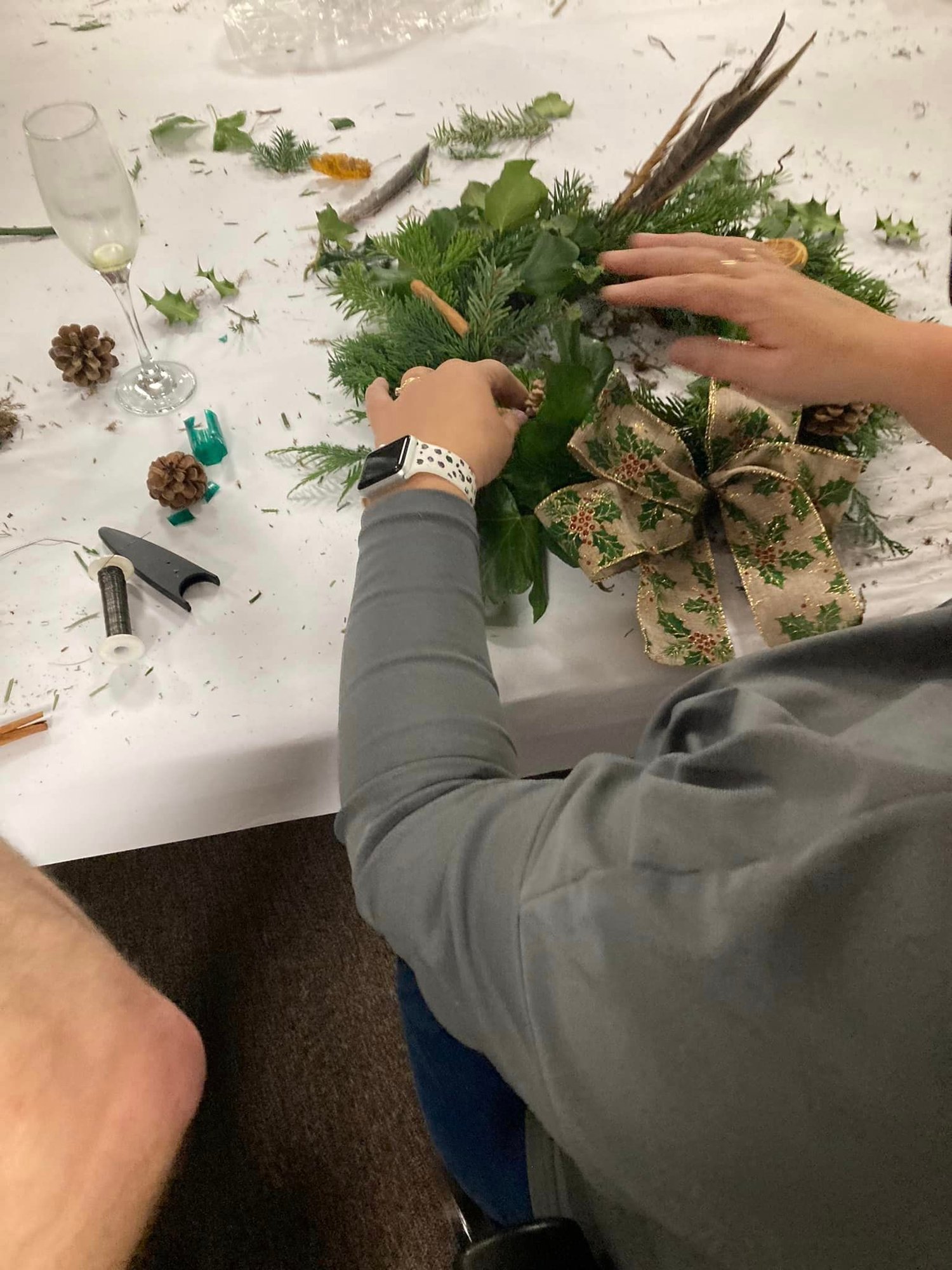As I start to deliver my Christmas wreath workshops during November and December, I thought I would share a bit of the history of wreaths. Why we make them and hang them on our doors.
I have seen the popularity of wreath making rise over the past years, I have been delivering workshops for over 10 years now. When I first started, the classes themselves were popular but I was one of a few doing them. Often people just associated wreaths with death and graves and not something that they wanted on their door. I often say that they don’t just have to go on your door. Over the last few years ,I have seen a real change, they have become popular now and there are lots of workshops taking place. I think this links with the trends of more natural, organic designs and themes. Plus we are definitely reconnecting to nature more.
So, there’s a mixed bag of theories around the wreath and it’s origins, I have covered a few of them.
The wreath was meant to represent the crown of thorns worn on the cross, with the red berries meant to be Christ’s blood. By hanging one of these on their door, Christians were inviting the spirit of Christ into their home.
Some believe the origin goes back to Ancient Rome, where the wreaths were hung on doors to represent victory. Before the wreath became associated with Christmas, it was a prominent emblem of victory and power in ancient Greece and Rome. We all know of the wreaths used at the Olympic games.
Another popular theory traces the wreath back to German folklore, where the wreath’s evergreen was used as a symbol of continuity and sustained life in the bleak winter months.
The custom of bringing evergreens home during the winter months among northern and eastern Europeans in the 16th century, with Germans commonly credited with starting the Christmas tree tradition. During this period, pruning the tree was a part of the preparation process. “Limbs were often cut off in an attempt to make the tree more uniform in shape or to fit into a room,” Collins writes in his book. Instead of throwing the pieces of greenery away, the Europeans wove the excess into wreaths. We now use Spruce, a very hardy tree that doesn’t drop it’s needles.
The branches were formed into a wheel-like shape partially for convenience’s sake, easy to make and hang but the shape was also significant as a representation of divine perfection. It symbolises eternity, as the shape has no end. This is brings a lovely meaning to the wreath ring.
Equally important was the material forming the wreaths — the evergreen tree. Evergreen trees were a species looked upon with awe and admiration, since they, unlike most living things, survived the harshness of winter. The trees appeared in abundance in northern and eastern Europe, and people brought them into their homes. “That was a symbol to them of power, of resilience, and in a way, of hope,” Collins says. Who does need a bit of this?
Despite its widespread popularity today, the wreath started with humble beginnings. “We live in a throwaway culture,” says Collins. “The wreath was born out of not throwing things away.”
Today’s wreaths are much more natural and we use other hardy foliage to create texture, interest and a fragrant scent. You can decorate them to your own taste, I do love the more natural looking wreaths. If you make your own it’s not only relaxing, mindful but you also have the joy of looking at your unique creation throughout the December month.
Wreaths can also be made for every season, embracing the symbolism that each season brings and using the fresh foliage of that season. I can’t wait to be making Spring Wreaths.



